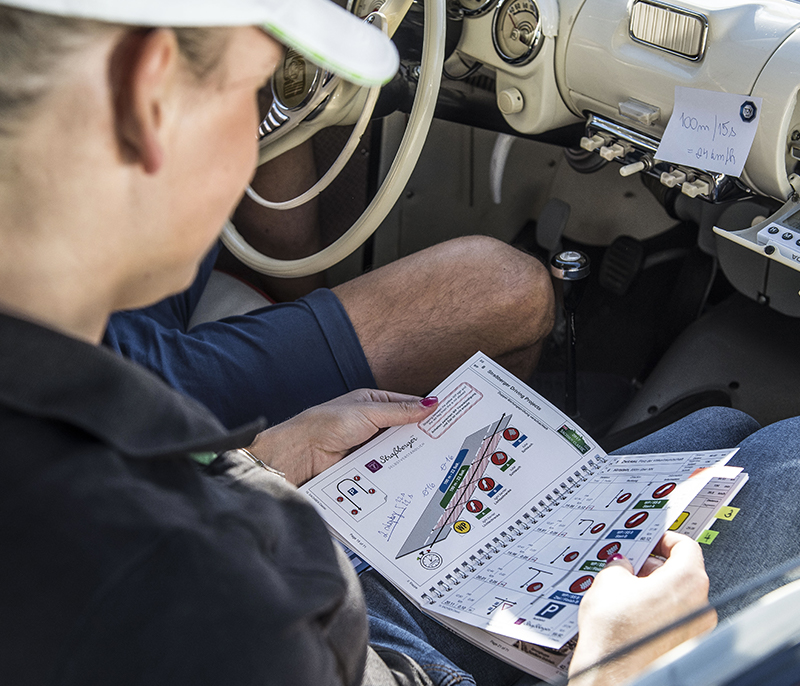The navigator guides the journey according to a detailed itinerary that the team receives the day before the start. Based on this, the crew will discuss in advance how to drive the speed tests. Sometimes, it is necessary to make calculations using the available data. A typical computation might determine that the car must pass through the length of the speed test in exactly 1,182 seconds.
Crews are permitted to use electronic stopwatches (but there also exist special applications for smartphones and tablets) or they can register in the mechanical stopwatch category for which no electronic aids of any sort are permitted. Ideally, the navigator will have three stopwatches, because some speed tests are overlapping one another or are set up in sequence. What’s more, there also can be surprise speed tests that are not marked on the itinerary.

















































